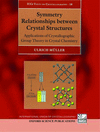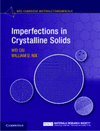issue contents
October 2017 issue

Cover illustration: The molecular arrangement of unsubstituted phenyl (E)-1-benzylidene-2-phenylhydrazine (HT00) in the bc plane, see Dey & Chopra [(2017). Acta Cryst. B73, 781–793].
opinions
Three approaches to the exploration of the crystal structure landscape are outlined. These are crystal structure prediction, non-ambient crystallography and charge density analysis.
scientific commentaries
Free 

A commentary is given on the article by Dittrich et al. [Acta Cryst. (2017), B73, 794–804] in this issue.
research papers
Download citation


Download citation


The crystal structures of six trifluoromethylated phenylhydrazones have been studied in detail, particularly in terms of the solid-state diversity (such as polymorphism and isostructurality) associated with different supramolecular architectures with H/CF3 substitution in the absence of any strong hydrogen bonding. The most stabilizing molecular building blocks have a higher dispersion contribution due to the greater overlap between molecular surfaces, leading to an increase in the magnitude of van der Waals interactions.
Open  access
access
 access
accessAspherical atom refinement with conventional data sets is now possible for coordination compounds. As example structures, a number of pairs of published structures, where the element-type assignment of the metal was unclear, have been re-investigated. Identification of which structure is correct can be made from the deposited Bragg intensities alone.
Download citation


Download citation


New supramolecular synthons in crystal structures involving organic fluorine have been observed and characterized. The nature, energetics and topological properties of these contacts derived from electron-density studies establish their bonding character. The enhanced acidic nature of the participating H atoms is responsible for short, strong and highly directional contacts with fluorine. Their hydrogen-bonding character is thus established unequivocally, with a pronounced modification of the features associated with crystal packing.
Download citation


Download citation


Quenching enhances the disorder of the cation distribution in Sr0.52Ba0.48Nb2O6 crystals which leads to higher spontaneous electric polarization. The amplitudes of the incommensurate modulations are also increased.
Download citation


Download citation


Using a high-sensitivity silicon detector and a micro-focus source, the norsethite [BaMg(CO3)2] low-temperature superstructure has been tracked across the temperature-driven α–β phase transition using single-crystal diffraction experiments. Systematic analysis of physical potential order parameters reveals the structure-related driving force and that the transition is tricritical in nature.
Download citation


Download citation


The incommensurately modulated crystal structure of [C4H10NO]+[BF4]− involves partial ordering of [BF4]− along with conformational changes of the morpholinium cation. Both features are essential for the phase transition. A pure order–disorder transition is excluded on the basis of computations of the configurational entropy of the incommensurate structure.
B-IncStrDB reference: 13272ESbhTu
CCDC reference: 1558079
Download citation


Download citation


Structures and phase sequences for two tetramethylammonium tetrachlorometallate compounds have been determined as a function of temperature. Crystal-packing analysis and first-principles calculations were used to rationalize the experimentally determined sequence.
Download citation


Download citation


The structure of the ferric sulfate mineral parabutlerite was found to be commensurately modulated and was refined using a superspace approach as a commensurate (3 + 1)-dimensional case. Modulations are connected with accommodation of the best achievable geometry for the hydrogen bonds.
B-IncStrDB reference: 13292E1LLnf
CCDC reference: 1549984
Download citation


Download citation


Single-crystal neutron diffraction was performed on [K1−x(NH4)x]3H(SO4)2 in order to obtain the exact hydrogen-bonding network. A correlation between the kinetics of the superprotonic phase transition in the crystalline state and hydrogen-bond strength is described.
CCDC reference: 1555199
Download citation


Download citation


Open  access
access
 access
accessThe crystal structure of cobalt carbonate hydroxide Co2CO3(OH)2, a solid important in materials and environmental science, is investigated using density functional theory (DFT) simulations and powder X-ray diffraction (PXRD) measurements.
CCDC reference: 1553059
Theoretical analysis of the bond length–bond valence correlation yielded an extension of the distortion theorem.
Download citation


Download citation


This paper describes the single-crystal-to-single-crystal phase transitions triggered by molecular rotator ordering and structural order–disorder transformation in the two-dimensionally isostructural but energetically similar co-crystals, which are hexamethylenetetramine–benzoic acid (1/2) and hexamethylenetetramine–4-methylbenzoic acid (1/2) at the transition temperatures of 257.5 (5) and 265.5 (5) K, respectively.
Download citation


Download citation


Intermolecular interactions and molecular conformations are compared for riociguat molecules in the solvent-free drug [form (II)] and three different solvate structures. Desolvation of solvates result in form (I) of the riociguat.
Download citation


Download citation


A hydroxyl-dominant analogue of gadolinite-(Y) has been discovered in the Heftetjern granitic pegmatite, southern Norway. Data are provided here on the chemical composition, physical properties and crystal structure of this mineral, as well as its relationships with other members of the gadolinite–datolite group.
CCDC reference: 1547407
Download citation


Download citation


Multiple structure types were found in a systematic study of barium rare earth tetrasilicates. The ionic radius of the rare earth element and the presence of fluorine in the crystal structures direct both the phase stability and the structural dimensionality.
Two small molecules having different alkyl side chains showed considerably different crystalline structures, resulting in different device performances.
Download citation


Download citation


The commensurate lock-in phase of K2Sc[Si2O6]F has been solved and refined from X-ray single-crystal diffraction data collected at 25 K. The low-temperature structure is characterized by octagonal clusters closely resembling those observed in the incommensurate structure of fresnoite- and melilite-type compounds.
CCDC reference: 1561286
Download citation


Download citation


The structures of two semiconducting thiostannates (R2Sn3S7, R is an organic cation) were investigated in detail using single-crystal X-ray diffraction, solid-state NMR spectroscopy and electron microscopy. The atomic level structures of the compounds are discussed in relation to their different light absorption properties.
Download citation


Download citation


Open  access
access
 access
accessCrystals of cis-Re[(PNPCH2-iPr)(CO)2Cl] are made up of two distinct non-order–disorder polytypes.
Download citation


Download citation


This is the first refined example of a cyanotrichite-group mineral in which long-range order of interlayer anions produces a superstructure.
CCDC reference: 1563753
Lewis acid strengths are listed for 135 cations bonded to oxygen for use with published Lewis base strengths, and a new correlation between Lewis acid strength and ionization energy is shown.
A machine learning approach is developed to rapidly predict the displacements of previously unexplored octahedral cations in PbTiO3-based ferroelectric perovskites. Thus, expanding the knowledge base on ionic displacement data, which are important for the rational design of novel ferroelectric perovskites.
Download citation


Download citation


Single-crystal X-ray diffraction, PBE-DFT optimization under periodic boundary conditions, and Atoms In Molecules and electron localization function theories were used to examine in detail non-covalent interactions in the [2:1:1] multicomponent crystal of 1,1-aminocyclopentanecarboxylic acid:oxalic acid:water. Interactions were scaled in magnitude, visualized within the crystal with Non-Covalent Index isosurfaces and compared with those rendered by X-ray diffraction geometrical analysis.
CCDC reference: 1568826
Download citation


Download citation


3-(Pyridin-4-yl)acetylacetone (HacacPy) may be used as an N-donor ligand in coordination chemistry and in thermal degradation. After deprotonation of the acetylacetone moiety in HacacPy, its metal complexes, Fe(acacPy)3 and Al(acacPy)3, can act as poly(pyridine) bridges between hard and soft metal cations.
Download citation


Download citation


Structure refinement of several e-plagioclase crystals reveals the ordering sequence and phase relations of Na-rich plagioclase feldspars, pushing one step closer towards solving the plagioclase phase diagram.
Download citation


Download citation


Pharmaceutical cocrystals of the antituberculosis drug pyrazinamide with substituted hydroxyacids (2,4-dihydroxybenzoic acid; 2,6-dihydroxybenzoic acid; 3,5-dihydroxybenzoic acid and ferulic acid) and a molecular salt with p-toluenesulfonic acid have been synthesized using both mechanical grinding as well as solution crystallization. This is the first report of the pyrazinamide salt.
book reviews
Free 

Free 



 journal menu
journal menu
















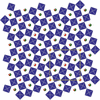

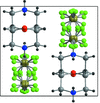
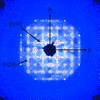









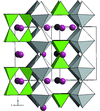



![[\bar 1]](/b/issues/2017/05/00/ps5062/teximages/ps5062fi1.gif)





![[{\bar {\bf 1}}]](/b/issues/2017/05/00/dk5059/teximages/dk5059fi1.gif) structures of Na-rich plagioclase feldspars: a single-crystal X-ray diffraction study
structures of Na-rich plagioclase feldspars: a single-crystal X-ray diffraction study
